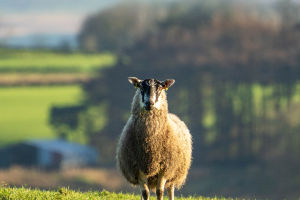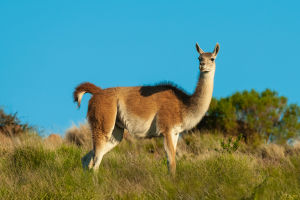Red foxes are easily recognized by their long snouts and vibrant red fur that covers their face, back, sides, and tail.
Their throat, chin, and belly are grayish-white, while their feet and black-tipped ears add striking contrasts. One of their most distinctive features is their fluffy, white-tipped tail. They typically measure about three feet in length and stand two feet tall.
Distinguishing Features
Red foxes are often mistaken for gray foxes, as they share overlapping habitats. The key difference lies in the tail: red foxes have a white-tipped tail, while gray foxes have black tips. Gray foxes are smaller with rounder faces and shorter snouts. Despite their similarities, these foxes belong to different genera within the Canidae family.
Red Fox: The Skilled and Cunning Hunter
Video by Wild Matters
Range
Red foxes are widely distributed across the continental United States, from Alaska to Florida. They are less common in the Southwest, where sightings are rare. They thrive in open areas like woodlands, suburban neighborhoods, wetlands, and brushy fields.
Diet
Dear Lykkers! Red foxes primarily feed on rodents and rabbits but have a diverse diet that includes birds, amphibians, and fruit. They are opportunistic feeders, scavenging from garbage cans and farms when necessary. Their resourcefulness in finding food, even in winter, underscores their reputation for being clever and adaptable.
Winter Survival
During harsh winters, red foxes showcase their resourcefulness by locating food even in challenging conditions. This adaptability ensures their survival and highlights their reputation as cunning and intelligent animals. Their keen sense of smell and hearing aids them in pinpointing prey, even beneath layers of snow.
Life History
Red foxes mate during the winter months. After mating, females build dens to prepare for their offspring.
Reproduction
Litters can range from one to 12 pups. The pups are born with brown or gray fur, which turns red within about a month. Both parents care for the young until fall, when the pups become independent and venture out on their own.
Pup Development
Pups are born with brown or gray fur, which gradually transitions to the characteristic red coat within a month. Both parents are actively involved in raising the young, providing food and protection. By fall, the young foxes leave their parents to establish territories of their own.
Survival Tactics
Their solitary nature and nocturnal habits help them avoid human detection. They can live discreetly, finding food and shelter even in the most unexpected places. Their ability to coexist with humans makes them one of the most successful carnivores in the modern world.
Conservation
Red foxes have adapted remarkably well to human-altered environments, thriving in suburban and rural areas where other large predators have declined. They inhabit parks, woodland edges, and similar habitats, taking advantage of available food sources. Their solitary nature allows them to avoid human detection with ease.
Fun Fact
Red foxes possess exceptional hearing, capable of detecting low-frequency sounds and even the movements of rodents underground.


